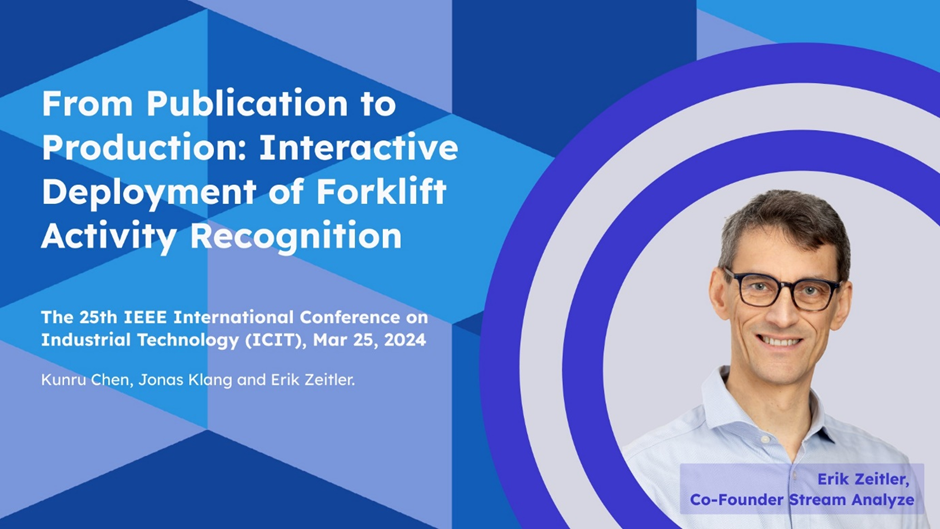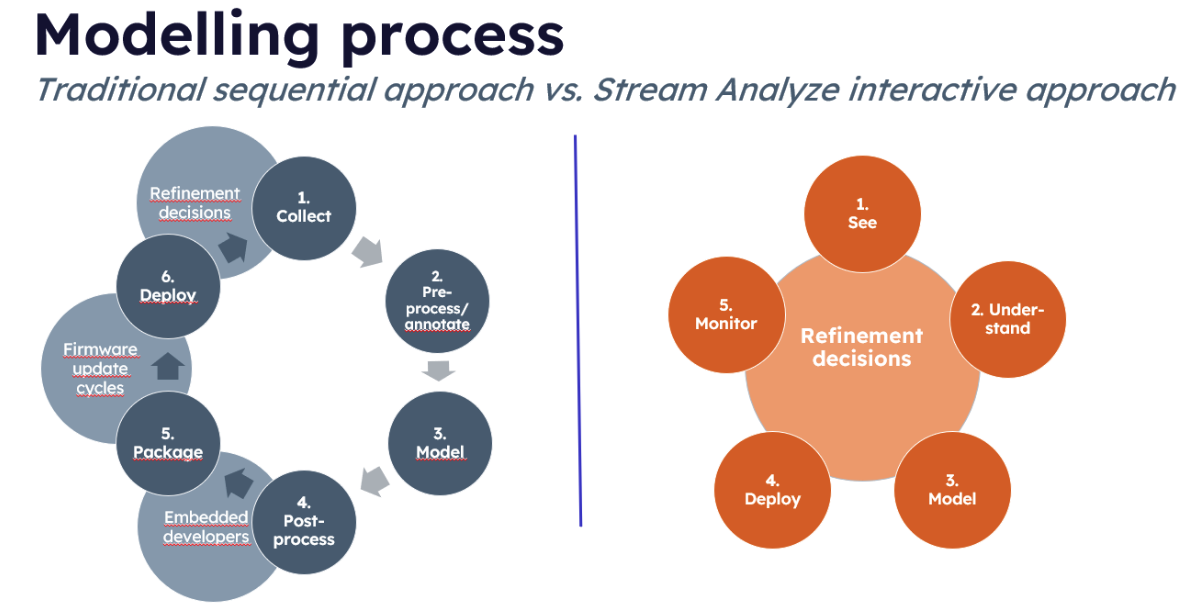
Introduction
The industrial sector is currently witnessing a paradigm shift, thanks to the Internet of Things (IoT) and machine learning (ML). The potential to enhance operational efficiency, safety, and adaptability through data-driven methods is immense, yet transitioning these theoretical models into practical, real-world applications remains a challenge. Addressing this gap, the paper "From Publication to Production: Interactive Deployment of Forklift Activity Recognition," authored by Kunru Chen, Jonas Klang, and Erik Zeitler, introduces a novel approach that promises to substantially improve the lifecycle management of ML methods in operational settings.
A Milestone Achievement at the 25th IEEE International Conference on Industrial Technology
Launched at the prestigious 25th IEEE International Conference on Industrial Technology, this paper not only showcases innovative research but also signifies a pivotal moment for industrial automation. The authors, representing a synergistic collaboration between academia and industry—Halmstad University, Toyota Material Handling Europe, and Stream Analyze—bring to light a successful implementation of ML models on forklift trucks through interactive deployment.
The crux of this work lies in its approach to bridging the often-vast gap between laboratory-developed ML models and their application in the unpredictable and dynamic environment of industrial operations. Through the utilization of the Stream Analyze Platform, the project demonstrates an interactive method that facilitates real-time adjustments and optimization of ML models directly on the forklift's telematics unit. This capability not only enhances the accuracy and reliability of the models but also introduces an unprecedented level of adaptability to operational variations.
Streamlining Edge AI Model Development
The Stream Analyze Platform refines AI model development, significantly condensing the time from validation to deployment, as depicted in the illustration below. It enables an interactive, iterative process that supports model adjustments in live environments. This approach allows for direct experimentation with live data on edge devices and enables models to dynamically evolve with immediate feedback. The platform facilitates swift deployment without the conventional requirements for manual coding or firmware updates, emphasizing efficiency in operational model refinement.

Optimizing Operational Efficiency and Cost
1. 52% Accuracy Boost in Just 2 Hours: The project achieved a dramatic 52% improvement in model accuracy by incorporating expert-driven decision rules. Remarkably, these adjustments and the subsequent model re-deployment were completed in just two hours by a TMHE domain expert. This efficient process strongly advocates for the benefits of interactive deployment over traditional methods, emphasizing speed and agility in operational enhancements.
2. Efficiency in Model Deployment: The study highlights the practical benefits of the Stream Analyze platform's capacity for interactive model deployment. This approach eliminates the need for firmware over-the-air (FOTA) updates or other complex deployment strategies, thereby enhancing the model's agility and responsiveness to operational needs.
3. Dramatic Reduction in Data Transmission Costs: The project's strategic move to process data on the forklifts themselves led to a remarkable reduction in the need for data transmission, slashing it from a potential 3 GB per month and forklift to just 250 kB per month and forklift. This edge processing approach effectively reduced data transmission costs by a factor of 10,000, addressing key concerns of scalability and economic feasibility essential for broad-scale deployment.
4. Model Adaptability to Real-World Conditions: One of the paper's core strengths is its demonstration of the model's adaptability to the dynamic and varied conditions of real-world forklift operations. Thanks to the Stream Analyze platform, the deployed models can be swiftly adjusted to correct erroneous predictions and adapt to different operational scenarios. Furthermore, such decision rules may be used to collect data for fine tuning of the ML models deployed.
Conclusion
The launch of "From Publication to Production: Interactive Deployment of Forklift Activity Recognition" at the 25th IEEE International Conference on Industrial Technology not only demonstrates the practical application of advanced data-driven methods in industrial settings but also sets a new standard for operational efficiency, cost-effectiveness, and adaptability.
Looking Ahead
The success of this project underscores the relevance of collaborative efforts between academia and industry in driving technological advancements. As the industrial sector continues to evolve, the principles and methodologies outlined in this paper will inspire further research and innovation.
.webp)

